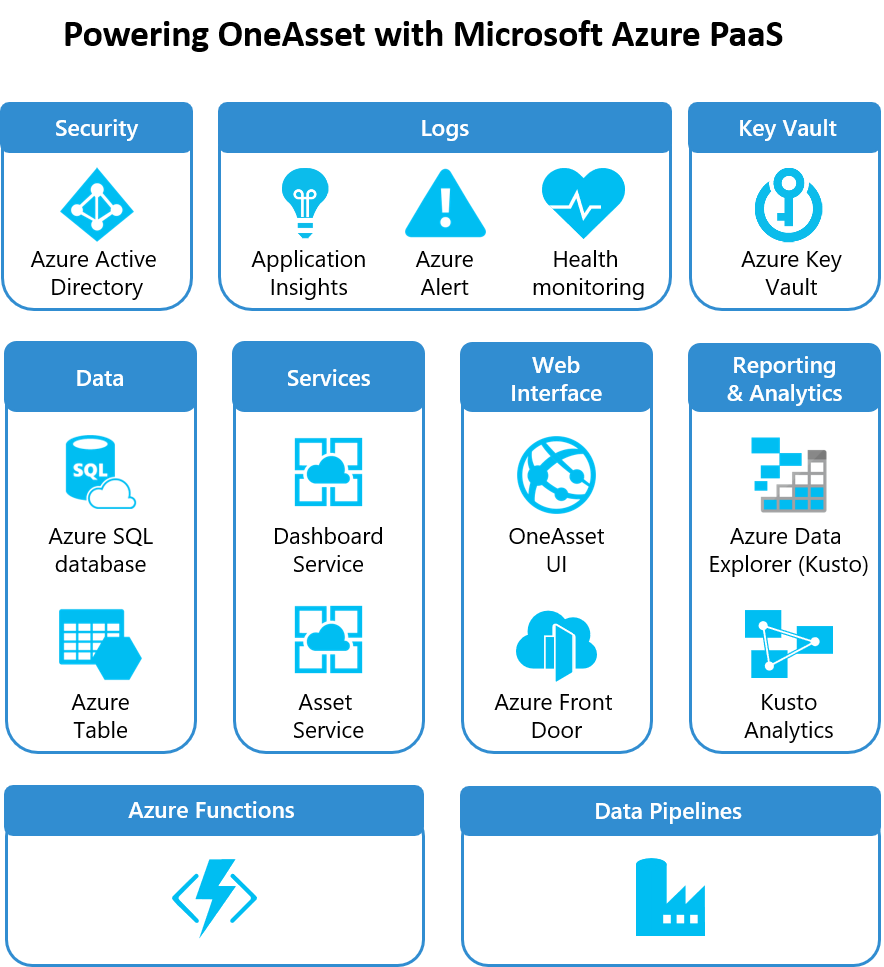 Turn on a device within Microsoft and there’s a good chance that it’s listed in OneAsset, Microsoft’s inventory management system. Microsoft recently moved OneAsset to the cloud—a move that has dramatically improved system performance and sets the stage for future development.
Turn on a device within Microsoft and there’s a good chance that it’s listed in OneAsset, Microsoft’s inventory management system. Microsoft recently moved OneAsset to the cloud—a move that has dramatically improved system performance and sets the stage for future development.
OneAsset is what you might call a very mission-critical app.
“OneAsset is essentially the inventory system for every device that exists within Microsoft. That’s every single piece of hardware from laptops to servers—all the various pieces of network, storage equipment, even virtual devices,” says Pete Apple, principal service engineer in Microsoft Digital, the engineering organization at Microsoft that builds and manages the products, processes, and services that Microsoft runs on.
The data collected within OneAsset is used throughout MS Digital. OneAsset data also interacts with 35 other systems for inventory management, compliance, system management, and other operations.
With the move to Microsoft Azure, the OneAsset team wanted to do more than simply move machines to the cloud. They also wanted to take advantage of a whole host of Microsoft Azure services that could handle increasingly complex workflows, while also scaling to meet growing demand.
The OneAsset team also recognized the complexity of the migration, Apple says. To ensure a smooth transition with minimal disruption, the team broke the migration down into several stages, starting with a lift-and-shift approach to Microsoft Azure infrastructure as a service (IaaS).
Moving all on-premises virtual machines (VMs) to Microsoft Azure IaaS provided better control of the OneAsset infrastructure, enabling the team to spin up environments and resources on demand.
[Learn how Microsoft Azure Front Door makes it easy for two apps to boost availability and security. Read how Microsoft moves its IT infrastructure management to the cloud with Microsoft Azure. Learn how Microsoft is boosting productivity and security with a move to Microsoft Azure.]
More scale, less management
After moving to the cloud, the OneAsset team turned its attention to the benefits of Microsoft Azure platform as a service (PaaS).
First, the OneAsset data tier was moved to Microsoft Azure SQL Database. This instantly freed the team from a long list of maintenance tasks, from patching to backups.
“By moving OneAsset to Azure, we reduced maintenance time by over 30 percent,” says Abhishek Khilnani, senior software engineer with Microsoft Digital.

Less time spent on maintenance also meant more time to focus on developing other OneAsset features.
“We’re delivering more of the features that our users are asking for, which makes for a better overall experience,” says Richa Agarwal, also a software engineer with Microsoft Digital.
Microsoft Azure SQL Database also brought other key benefits, such as active geo-replication and auto-failover groups, Microsoft Azure Traffic Manager for the data integrity between primary and secondary instances, and a minimum 99.99 percent up-and-running guarantee.
As an additional safeguard, the team rolled out each part of the PaaS migration as a preview, with the original IaaS environment made available to users as a backup. This helped support a seamless migration.
“We had almost no incidents raised during the migration,” says Prakash Assudani, senior software engineering manager on the Microsoft Digital team.
Completing the move to PaaS
The next step in the journey was to migrate the OneAsset web and user interface (UI) front end to Microsoft Azure App services. With all parts of the app infrastructure now outside of the corporate network, VPN access was no longer required. This was great news for all OneAsset users.
“A lot of the services using OneAsset were already on Azure. When OneAsset was on premises, this meant that these services had to use VPN to connect,” Apple says. “With Azure, we got rid of that dependency on VPN.”
OneAsset also leveraged multiple security features in Microsoft Azure. For identity and authentication, the team moved to Microsoft Azure Active Directory and implemented Microsoft Azure Key Vaults to store and manage passwords. Microsoft Azure Front Door—a secure entry point for apps—also ensures availability for users around the world.
With Microsoft Azure Application Insights, logs that previously had to be stored directly on the web servers and downloaded for triaging issues can now be maintained in Microsoft Azure. “This enables us to run analytics and query the logs easily, and provides us with automatic alerts, analytics dashboards, and other benefits,” Agarwal says.

Better data reporting and analysis
With data management and UI covered, the team turned to data analysis.
To better meet the needs of its users, the team developed a solution for data analytics using Microsoft Azure Data Explorer, a log analytics cloud platform optimized for ad-hoc big data queries. Additionally, Microsoft Azure Data Explorer, sometimes known as Kusto, provides users with elaborate, built-in analytics and comprehensive indexing and reporting features. It also provides several key improvements over the old system.
Complex queries that took hours with the old system can now be completed within seconds.
“We used to receive numerous tickets for query issues, and those tickets have been practically eliminated,” says Amit Raghuwanshi, a senior software engineer on the CPF team.
Microsoft Azure Data Explorer has also enabled the team to create a more relevant user experience.
Over time, users on the old system had created specific views of data containing specific attributes. The problem was that this exposed lots of similar data in different views, and to access such views, the OneAsset team had to give read-only access to SQL to selective users and teams. With Microsoft Azure Data Explorer, direct SQL connectivity is no longer required, and a better, more compact solution with performance and availability is available with analytics over the internet.
“We were quickly able to go from 190 views down to just 20 views that were more relevant to a larger number of users,” says Disha Chauhan, a program manager at Microsoft.
This same improvement could have also been done with the on-premises system, but Microsoft Azure Data Explorer made it easier. “Moving to Azure PaaS has simply enabled us to do more, faster,” Assudani says.
Looking to the future
Microsoft Azure hasn’t just improved legacy features—it’s made it easier to create new ones.
Moving to Microsoft Azure allows the OneAsset team to go mobile. With the on-premises system running within the Corpnet environment, running internet-based solutions outside of VPN wasn’t possible. With Microsoft Azure, users can now access OneAsset from anywhere, even via mobile. “Starting with capabilities like this made it possible for us to build the app,” Chauhan says.
And the journey continues.
“Our goal is to ultimately bring every connected device at Microsoft into OneAsset,” Assudani says.
A quick check of the latest metrics indicates that the team is on track to achieve that goal. The number of records in OneAsset has doubled in just the last six months.
Thanks to Microsoft Azure, the OneAsset team has been able to keep pace every step of the way.
“The scalability of Azure has enabled us to manage tremendous growth while also giving us the flexibility to plan and adapt for future growth,” Assudani says.



